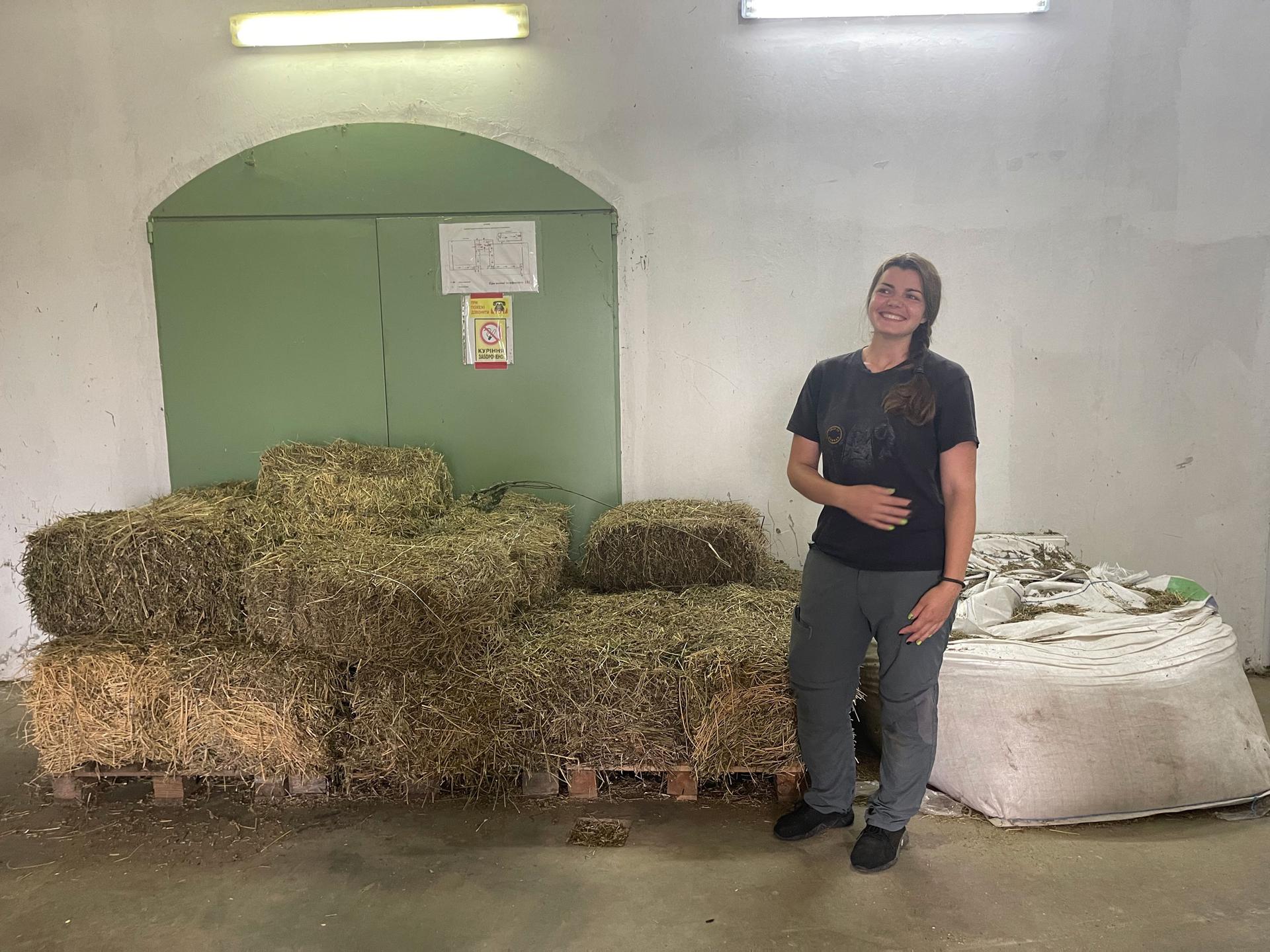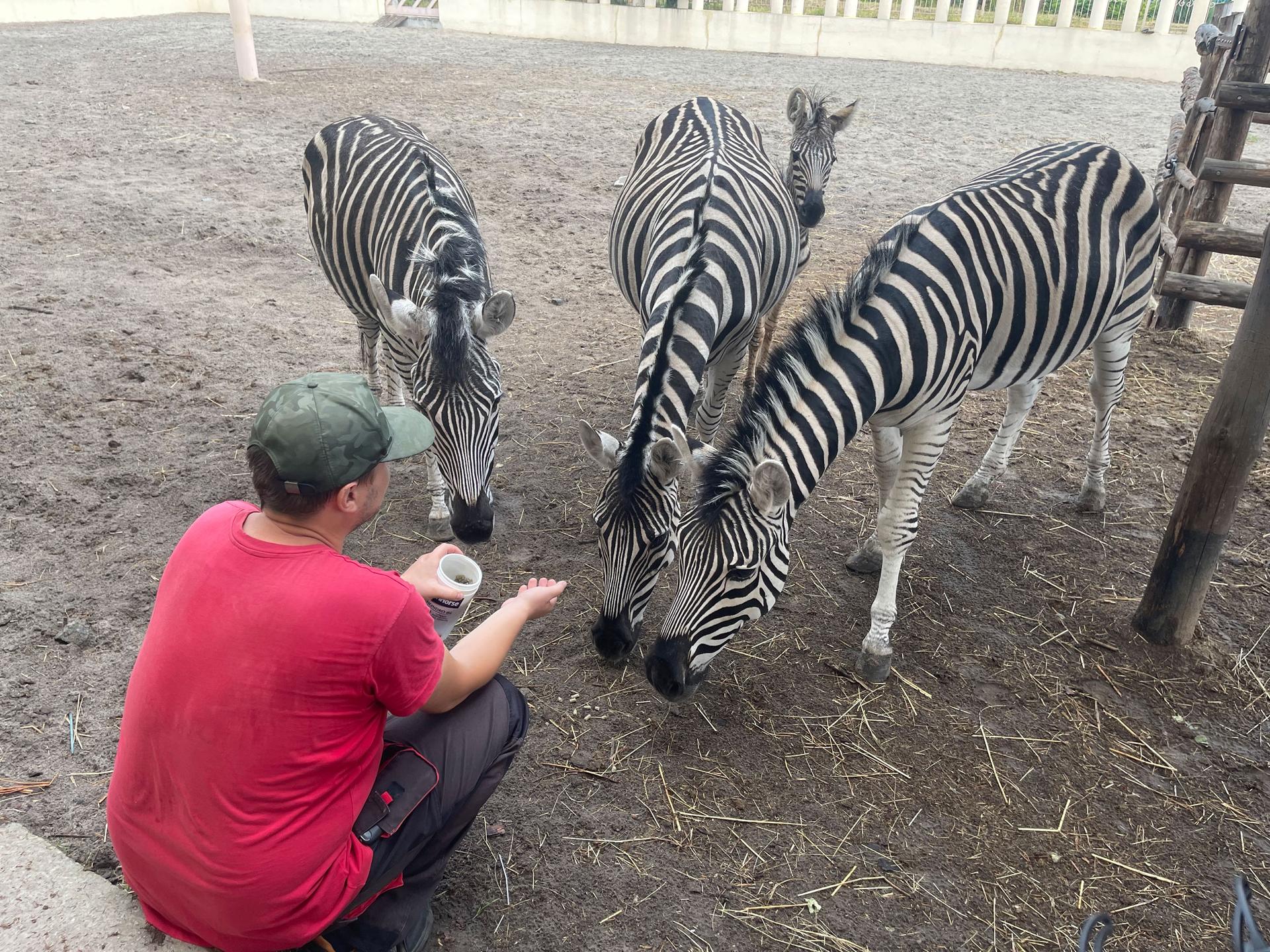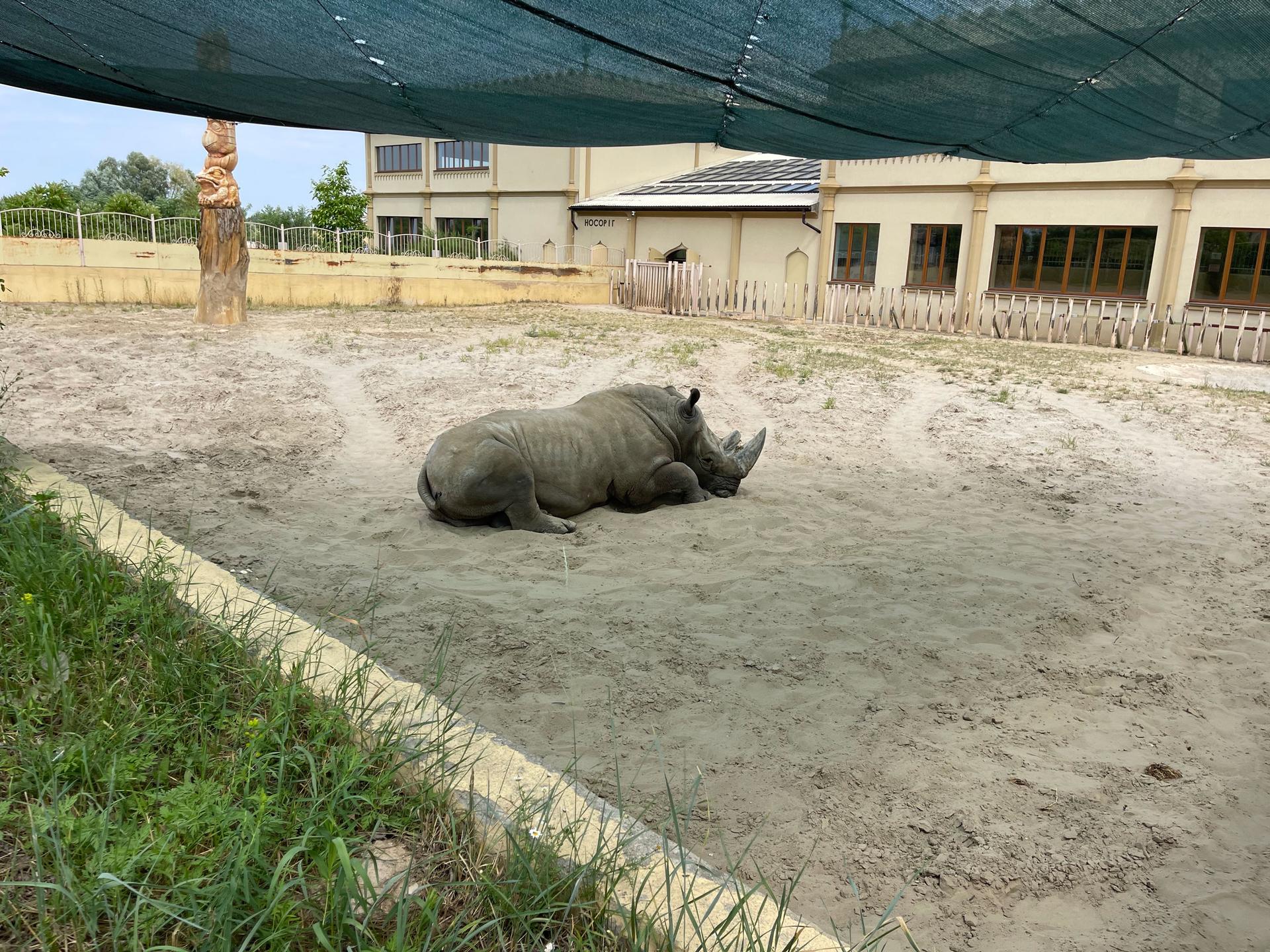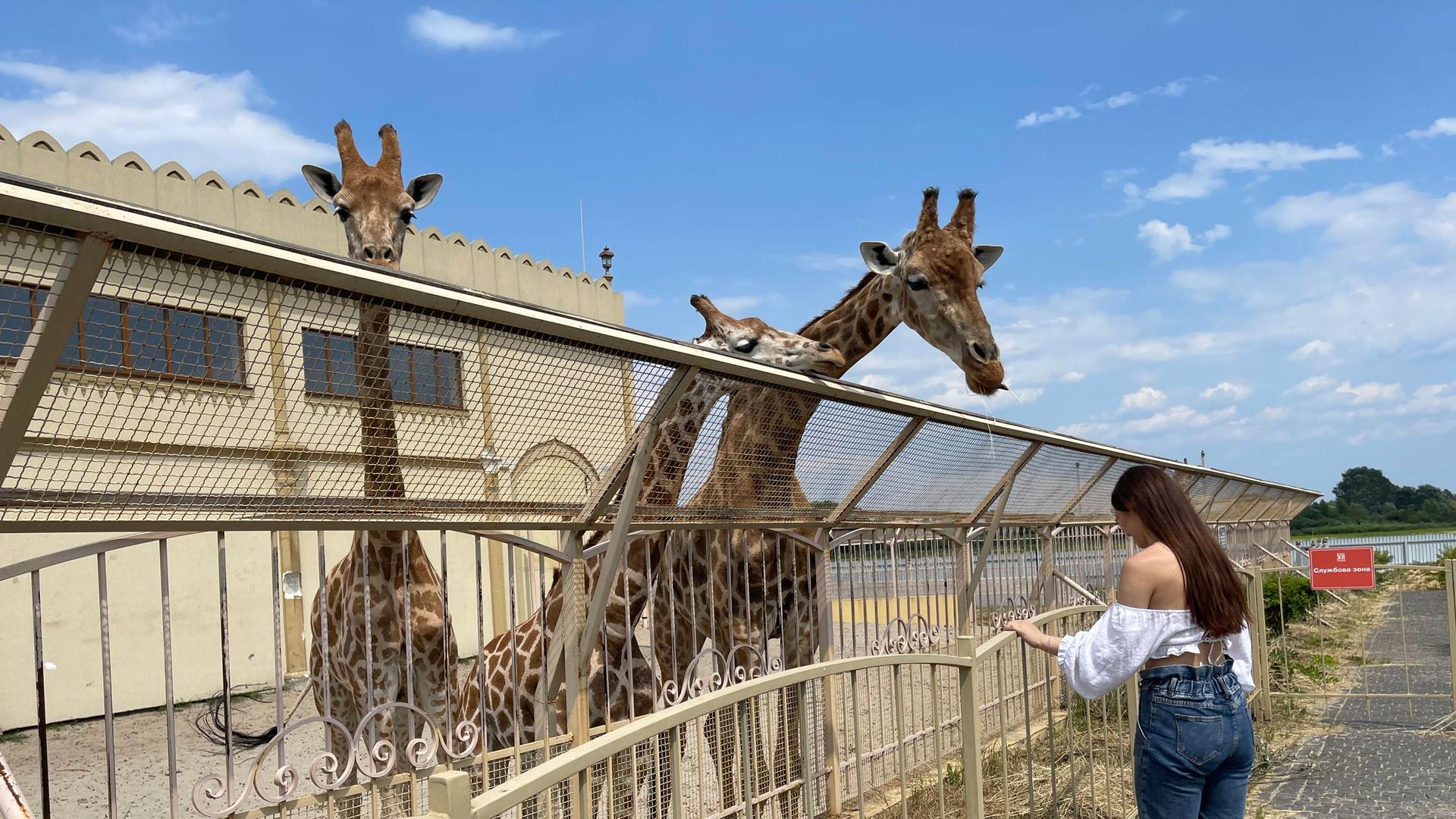Editor’s note: Some readers may find parts of this story disturbing.
It’s been four months since a privately owned zoo, located about an hour north of Kyiv, was occupied by Russian soldiers. But the damage and trauma left behind continues to reverberate there among people and animals alike.
“They have gone through all these explosions and situations they aren’t used to,” Alina Malynka, the zoo’s veterinarian, said. “But they’ve gotten used to the sirens … and they’re calming down bit by bit.”
She was one of the six staffers trapped inside Zoo XII Months when Russian soldiers set up camp there at the end of February during their ultimately and unsuccessful march to take Kyiv.
It was a very tense 35 days, she said.
“We were not so much scared … we were just not ready or used to this situation,” she said.
Before Russia invaded Ukraine, Zoo XII Months, like many similar institutions across the country, were starting to make a comeback from the COVID-19 pandemic.
Now, due to depleted money reserves and uncertainty on when the conflict may end, zoo staffers say they’re in worse shape than ever.

A zoo under occupation
Russia’s invasion of Ukraine made its way to the zoo park just days after Moscow invaded on Feb. 24.
The 45-acre zoo is located right off the bank of the Dnipro River, just outside the small village of Dimydiv. That’s only a few miles away from other Russian-occupied areas that made bigger headlines, such as Bucha, Gostemel and Irpin.
Russian soldiers broke down the gates and parked a tank right in front of the administration building, said Zoo XII Months owner Mikhail Pinchuk, who opened the place in 2015 with his own collection of exotic animals.
He was actually stuck outside of the zoo during its occupation, as Russians had blown up all the bridges around the village, and wouldn’t allow anyone in or out, he said.
Inside, six zoologists had to fend for themselves and the animals. The park has a variety of stable zoo animals, including camels, a rhinoceros, a hippopotamus and a variety of birds, apes and big cats.
Pinchuck said, thankfully, the Russian soldiers harmed no animals and no staff.
“They were in fact wandering around looking with eyes wide open. They couldn’t expect to see this sort of thing,” he said. “They even made some remarks that they wouldn’t mind returning, you know, more like visitors rather than this.”
Zoologist Serhii Burch said the soldiers were not openly hostile toward the staff.
“They weren’t pointing their guns at us. They were simply asking questions, taking notes and that’s it,” he said.

Meanwhile, the Russians ransacked the offices and made off with everything from magnets and underwear to socks and expensive equipment. Staff had to sleep where they could, often in the warehouse behind the giraffe enclosure where grain and plants are stored.
The animals were deeply affected by the soldiers’ presence, veterinarian Malynka said. In order to ration food, staff had to cut down the amount they were feeding the animals.
“Speaking of apes, let’s say they eat three times a day. So, we had to cut down to one meal a day,” Malynka said. “If we’re talking about predators, let’s say tigers. They would eat up to 7 or 8 kilograms of meat and we had to lower that down to 3 or 4 kilograms of meat.”
If the zoo had been cut off any longer, they would have run out of food, she said.
At the same time, all the animals were scared and stressed.
“We had one ape that killed itself, striking itself against the wall. We had a lot of birds that died, due to all of the explosions,” Malynka said.
One of the older giraffes fell down from fright of the loud noises, and the young male hippopotamus spent a majority of the occupation hiding underwater inside his enclosure, staff told The World.
Overall, the zoo has lost 15 animals and many animals still show signs of trauma and react negatively toward loud noises, she said.

Stressed animals, few visitors
Park XII Months was eventually liberated, but problems persist.
The animals remain distressed and, with virtually no visitors, the zoo isn’t making money. Pinchuk said that before the pandemic, they would see some 20,000 people per month.
“These days, sometimes … two, sometimes five [visitors],” he said. It is not enough for a place that costs about $1 million a year to run; a lot of that is going to just keeping the animals warm during the harsh Ukrainian winter, Pinchuk said.
And with the price of gas rising and the uncertainty of the war, they are preparing themselves.
“I understand that even if we go through this winter, there will be no other chance after that because [the zoo] is so big,” he said.
Zoos, ecological parks and nature reserves are often collateral damage during war.
Some of Ukraine’s largest and best-known zoos are located in cities, such as Odessa and Kharkiv — places in the eastern part of the country, near the front lines of the war.
Mykolaiv Zoo, a government-run institution in Ukraine’s south on the Black Sea, recently reopened on the weekends. Still, there are very few people left in the city, hence few visitors, its zoo director Vladimir Topchy said.
The zoo has somehow sustained no damage and they’ve lost no animals and staff so far, he added. However, the animals remained stressed from explosions and other loud noises, and there are eight unexploded shells still sitting in the zoo.
“Money-wise we are not doing great,” Topchy said. “We’re running out of money.”
Ultimately, Topchy said, it’s not sustainable long term to stay open and, if they close, it’s up in the air what would happen to the animals. Evacuations of animals to other parts of Ukraine or even to European zoos are becoming more and more difficult, particularly at zoos in places that are currently Russian-occupied.
While institutions across Ukrainian have banded together to try and help, the situation remains difficult, said Dmitri Tkachev with the Ukrainian Association of Zoos and Aquariums. Money is everyone’s biggest need right now, he said.
“Due to the coronavirus pandemic, we had no opportunity to earn money. This depleted our reserves,” said Tkachev, who is also the director of BION Terrarium Center in Kyiv. They have had to evacuate some of their animals and had a breeding center in eastern Ukraine destroyed by shelling.
“We were absolutely not prepared for such a situation,” he said.
Related: Modular housing in Ukraine provides shelter — and hope — for internally displaced people
